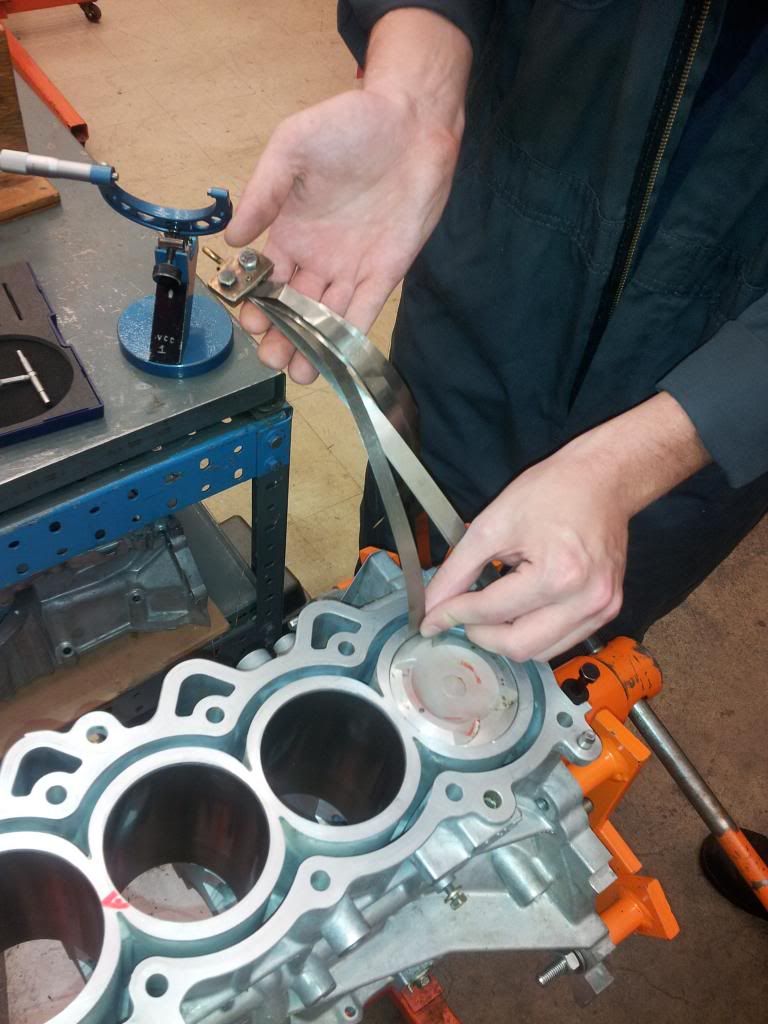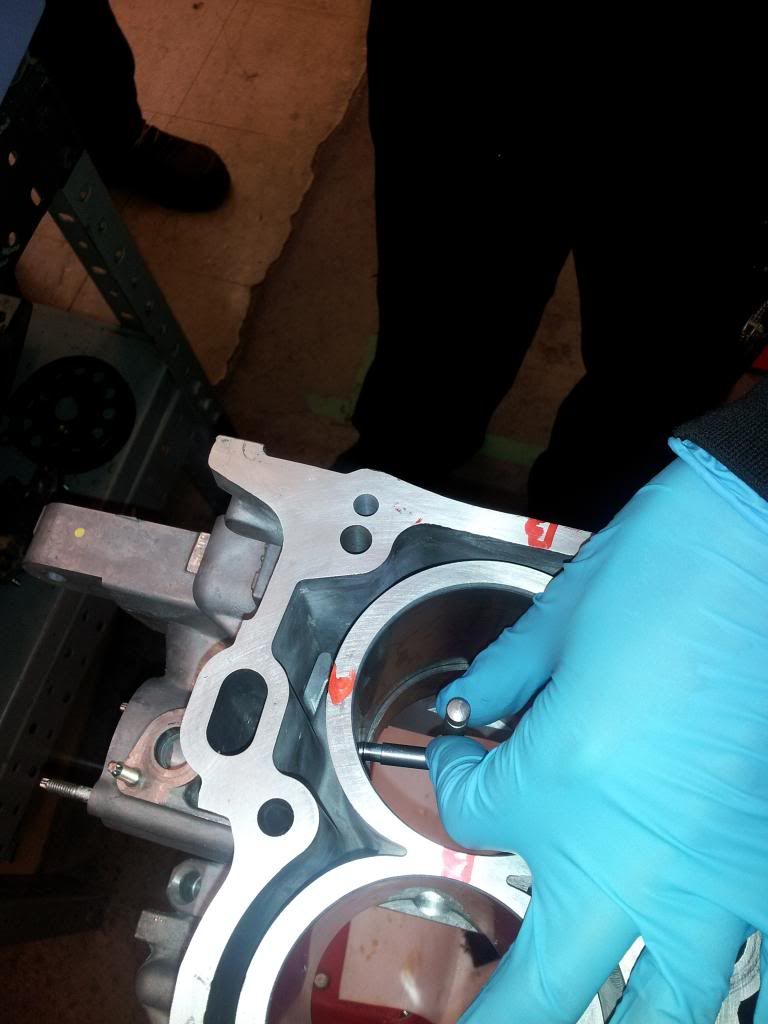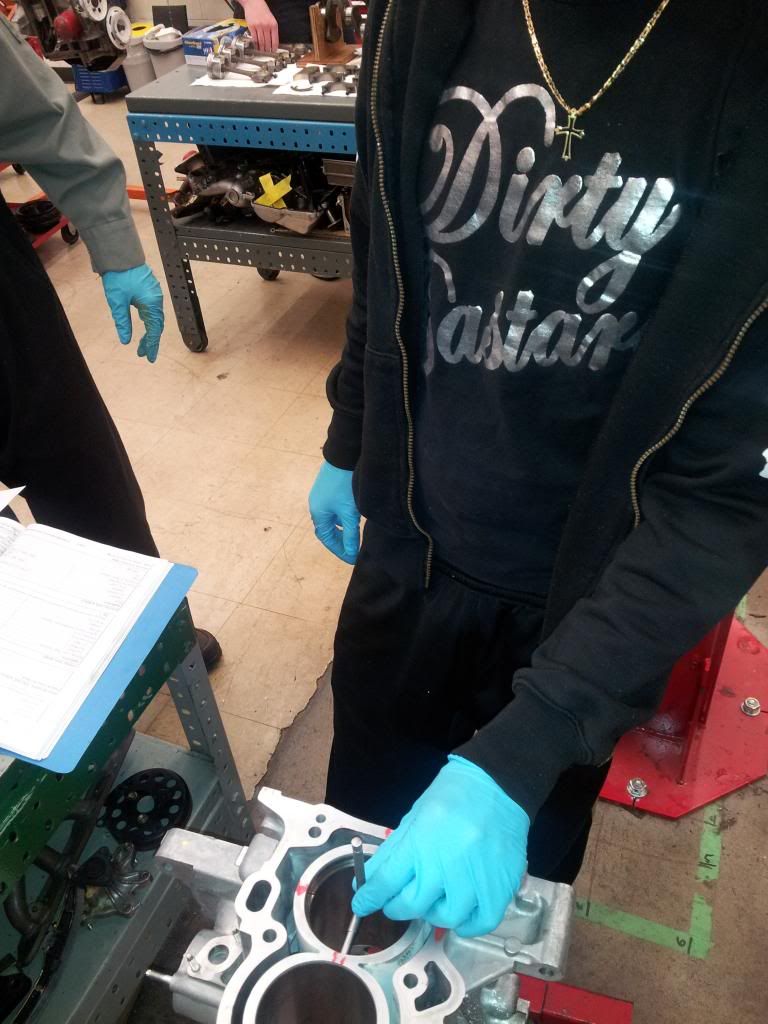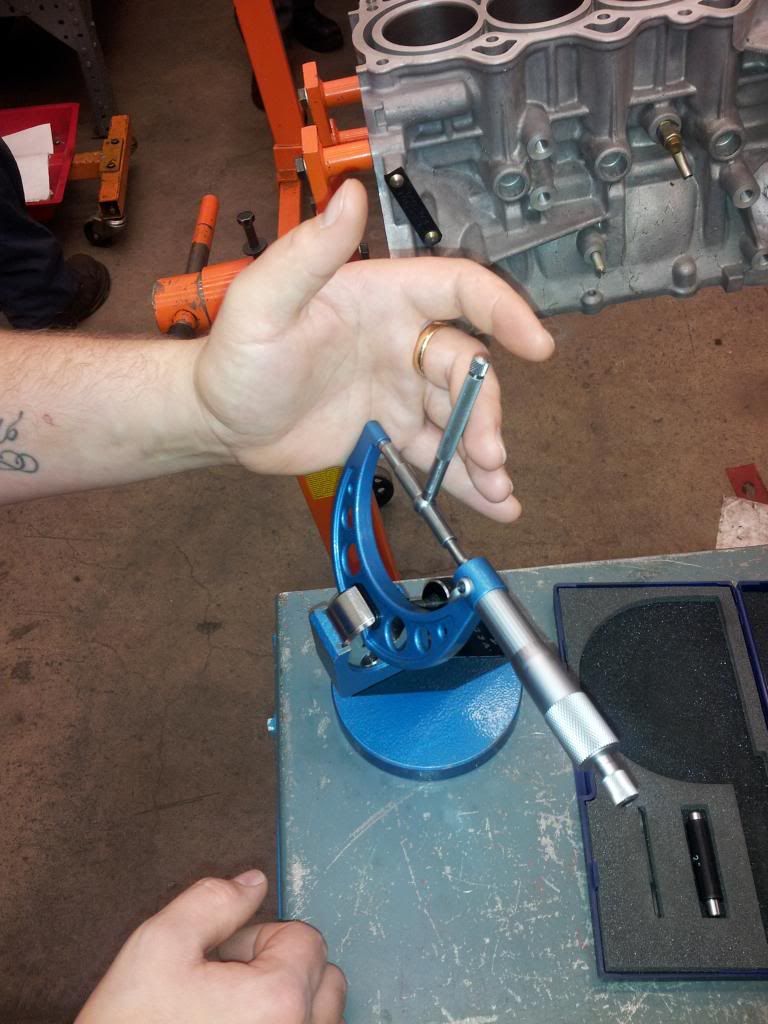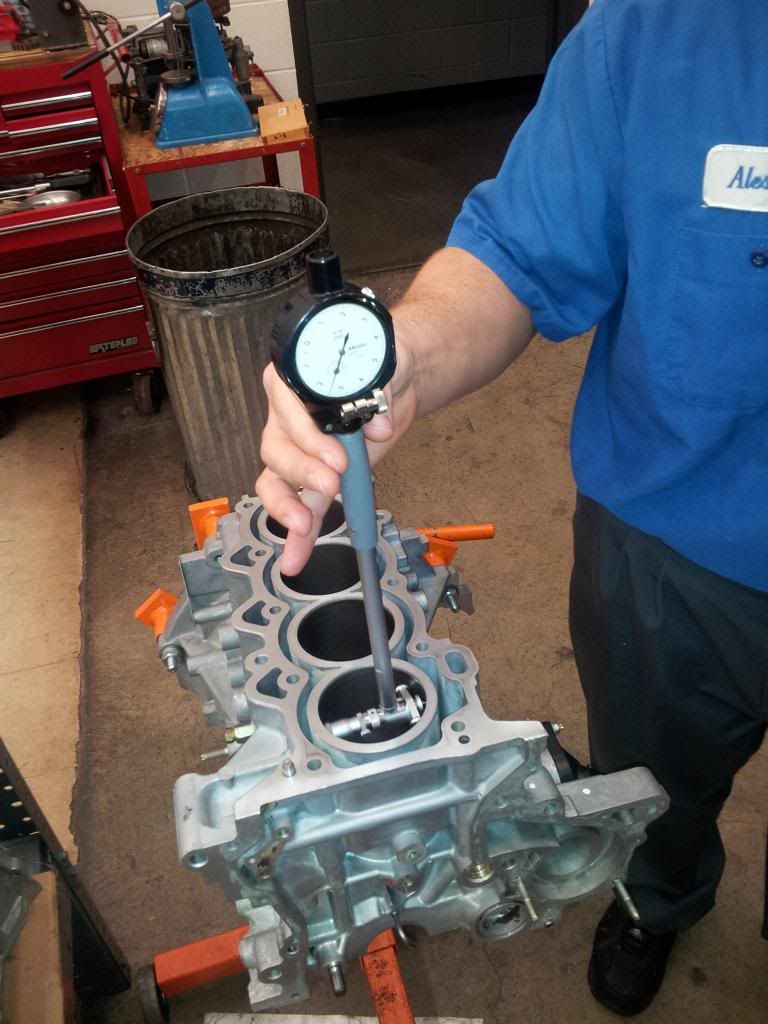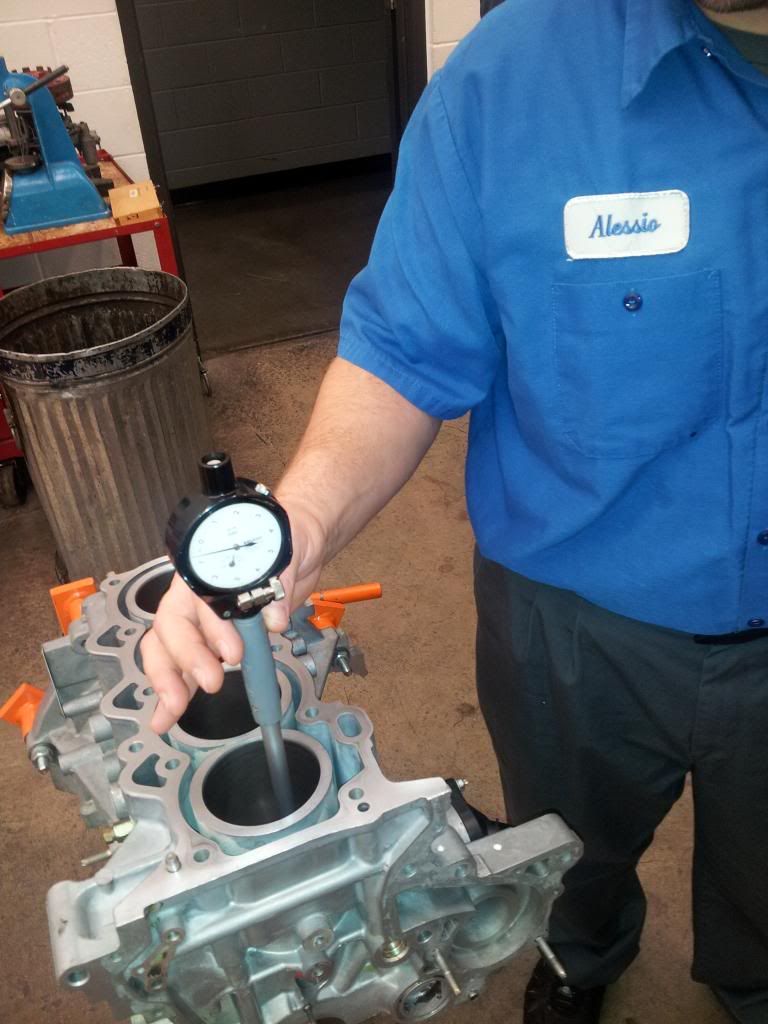Not saying it can't be done If that is the tools you have to use then go for it. I am saying why bother if you have the tools and if your engine builder can't afford a dial bore gauge then I may question how professional he is. Can you imagine if you went into Joe Gibbs Racing, Penske Racing, Roush Fenway Racing, Shaffiroff racing or any other reputable shop and saw them using a snap gauge to measure bores or a feeler gauge to measure piston to wall clearance. There is not a hope in hell they use these tools. Even if they had a machinist that says he can feel .0005 clearance there is no way they would chance it. Remember a human hair measures about .002-.003. Split that hair into six pieces and now tell me how accurate your feeler gauge is at measuring .0005. Just saying. I use a mic everyday and teach measurement using all sorts of precision measuring tools and I am well aware of how accurate one can be with practice. But I would much rather use a dial bore gauge than a snap gauge that I have to transfer over to a mic measurement anyday. One less thing to go wrong in my measuring. When I use a blueprint check sheet I would much rather give my customer a reading of say .0025 than a reading of well the feeler gauge felt good so it is about .0025. Your customer is usually a pretty smart individual and you can look pretty foolish if you can't back up your claims. Just saying??
Greg
Greg
